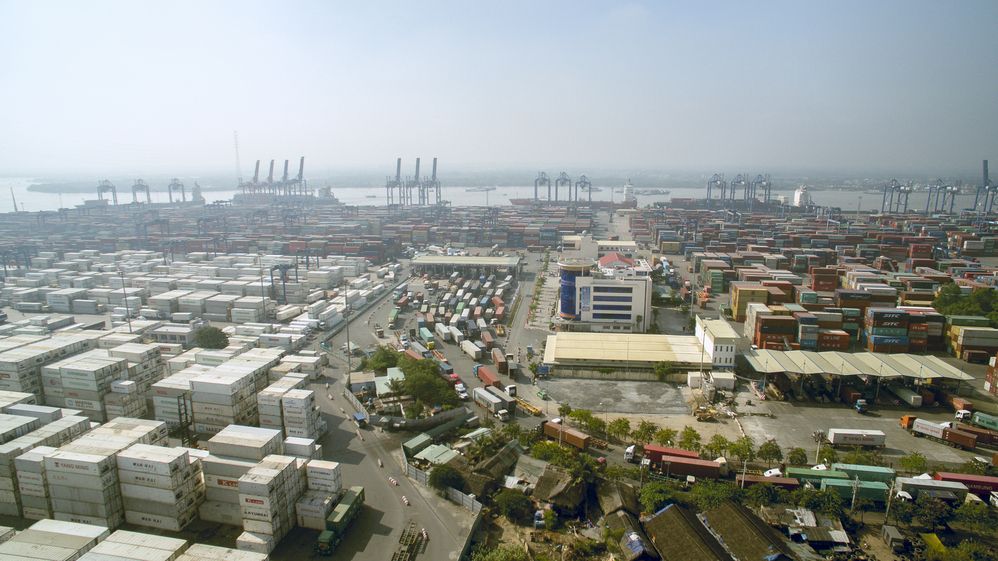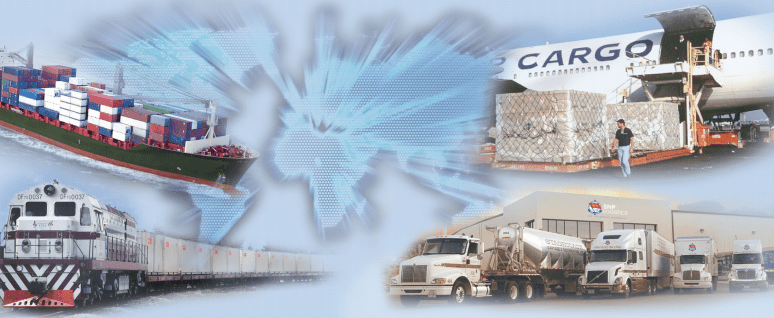
Vietnam loading up on logistics
20/04/2016
Regional integration and bilateral trade growth are driving Vietnam’s ambitions to become a major transport and logistics hub, though existing port infrastructure will need to be better leveraged to achieve the country’s goals.
Rising foreign investment in Vietnam and growing manufacturing and agricultural output have placed greater pressure on the logistics sector in recent years, with this trend set continue into 2016 and beyond.
Throughput at Vietnam’s ports is set to rise by 10% this year to 470m tonnes, according to data issued by the Vietnam Maritime Administration, while container shipments are pegged to increase by 11% to reach 13.3m twenty-foot equivalent units (TEUs) this year.
Sector prospects
Logistics account for 20-25% of GDP, according to the Vietnam Logistics Business Association (VLBA), with the sector projected to grow by roughly 12% per year through to the end of the decade, driven by a projected $632bn worth of trade by 2020.
Economic integration in Asia and the newly signed free trade agreement (FTA) with the EU and the Trans-Pacific Partnership (TPP) deal are all slated to provide a boost to Vietnamese logistics.
The rollout of the ASEAN Economic Community (AEC) at the end of last year should also see a reduction in bureaucratic procedures and greater regional connectivity, with the ASEAN Single Shipping Market, a key pillar of the AEC, being developed with a view to harmonise shipping industry regulations.
Meanwhile, the EU FTA and the TPP should see trade volumes rise dramatically, with the TPP projected to boost exports by as much as 28% in the next 10 years, according to media reports.
Despite significant expansion in the sector, local firms have not been able to reap the full scope of benefits available. Although there are more than 1200 local logistics companies in operation, most are relatively small and contribute only about 20% of sector revenue and trade activity.

Large-scale foreign operators continue to dominate, with 40 firms handling a combined 80% of the country’s international cargo movements. According to estimates from the VLBA, foreign firms account for between 80% and 87% of sector earnings, which total around $37bn-40bn.
Wholly foreign-owned logistics businesses were legalised in 2012, following Vietnam’s accession to the World Trade Organisation in 2007. Prior to 2012, foreign investors were required to establish joint ventures with local players.
Hub potential
Increased investments by local operators and improvements in connectivity could shift this balance of power, in time allowing domestic freighters to capitalise on growing trade.
With more than 3200 km of coastline and an extensive river network providing access to inland cities and production hubs, as well as neighbouring markets, Vietnam is well poised to develop its logistics sector, according to Nguyen Dang Nghiem, president and vice-chairman of port operator and logistics firm Saigon Newport.
“The geographic location and topographical conditions are some of Vietnam’s main advantages in terms setting up a regional logistical hub,” he told OBG. “Coastal land with deep rivers makes it convenient to build sea and river ports.”
While Vietnam ultimately aims to rival Singapore, Hong Kong or Malaysia as a logistics hub, insufficient transport infrastructure – with port road access at times unable to handle freight volumes – and high levels of bureaucracy are impediments to sector growth.
“Navigation tariffs, import regulations and Customs formalities are hindering Vietnam from becoming a more competitive port in the region,” Nguyen added.
Indeed, as a result of infrastructure shortfalls in some supply chain segments, logistics costs stand as high as 25% of GDP, well above that of Malaysia (13%) and China (18%).
Leveraging capacity
According to industry officials, Vietnam could strengthen its shipping credentials by taking advantage of available capacity at Cai Mep-Thi Vai, a VND40trn ($1.8bn) port complex in the southern province of Ba Ria-Vung Tau that first opened in 2009.

Just 1.16m TEUs were handled at Cap Mep-Thi Vai in 2014, the provincial transport department reported, equivalent to about 17% of the facility’s capacity.
While goods bound for overseas markets are currently transported to Hong Kong or Singapore first, stakeholders argue that repurposing Cap Mep-Thi Vai as a local trans-shipment centre could offer significant savings.
The Vietnam Ship Agents and Brokers Association estimates that handling and shipping Vietnamese goods directly from a local port could boost GDP by more than $2.2bn per year.
Greater efficiencies could also be achieved by anticipated privatisation of nearly a dozen of the country’s ports. In February the Ministry of Transport announced plans to divest state-owned Vietnam National Shipping Lines from nine of the country’s major seaports and companies, while reducing its stake in two other ports to 20%.
Oxford Business Group is now on Instagram. Follow us here for news and stunning imagery from the more than 30 markets we cover.